The Ultimate Guide to Rubber Caster Wheels: From Industrial Applications to Technological Innovations
Rubber caster wheel stand out for their exceptional shock absorption, noise reduction, and cost-effectiveness, making them essential components in warehousing, healthcare, and manufacturing. However, performance varies significantly based on rubber compounds, core materials, and operating environments. This guide delves deep into selecting, optimizing, and innovating with rubber caster wheel, backed by industry data and technical principles.
I. Core Advantages: Why Rubber Caster Wheel Dominate the Industry?
Superior Dynamic Performance
Shock & Noise Absorption: Mold-on rubber wheels dampen ground impacts, reducing vibration noise. Example: 6″ x 2″ scaffolding rubber caster wheel (SCRS60JB041384) absorb 80% of vibrations on rough terrain.
Floor Protection: Soft rubber (Shore A 60-75) minimizes scratches on wood/epoxy floors (note: black rubber may leave marks; non-marking formulas require customization).
Cost-Efficiency & Versatility
Prices are 30%-50% lower than polyurethane wheels.
Adapts to complex terrain: Wide treads (2″+ ) and elastic patterns navigate gaps, cables, and debris on construction sites or warehouses.
Chemical & Environmental Resistance
Thermoplastic Rubber (TPR) withstands -40°C to 180°C, resisting oils, steam, and weak acids/alkalis (ideal for labs/food plants).
Caution: Cast iron cores rust in humid environments; opt for aluminum/nylon cores (e.g., rubber caster wheel Connection SN60JB51).
II. Limitations & Solutions: When to Avoid Rubber Caster Wheel ?
Despite their strengths, rubber wheels face challenges in extreme scenarios:
| Limitation | Technical Cause | Alternative Solution |
|---|---|---|
| Lower Load Capacity | Low compression deformation threshold | Nylon-reinforced rubber wheels (capacity up to 3,050 lbs) |
| Long-term Deformation | Polymer chain stress relaxation | Use TPR wheels or relocate equipment periodically |
| Heat Build-up at Speed | Rubber hysteresis effect | Limit speed to <8 km/h + ball bearings for heat dissipation |
💡 Case Study: Hospital beds (requiring quiet steering) use 5″ TPR wheels (135-lb capacity). Forklift racks (2,000+ lbs) need polyurethane-steel core wheels.

III. Material Science: How Rubber Formulas Dictate Performance
Not all rubber wheels are equal—compositions critically impact lifespan and suitability:
Thermoplastic Rubber (TPR)
Pros: Combines rubber elasticity with plastic strength; tear-resistant, chemical-proof, non-marking (e.g., gray TPR wheels).
Cons: Prone to deformation under prolonged static loads (>48 hours).
Rubber-Metal Hybrids
Cast Iron Core + Rubber: Budget option ($12.49+) but corrosion-prone (indoor/dry use only).
Aluminum Core + Rubber: Lightweight, rustproof (e.g., ULINE H-3326R); food-safe.
Elastomer Wheels (Neoprene/Elastic Rubber)
High-rebound formulas (Shore A <55) reduce vibration by 40% for precision instruments.
IV. Industry Applications: Scenario-Based Product Recommendations
Match wheels to load, environment, and compliance needs:
Medical Equipment
Needs: Silent, non-marking, antimicrobial
Solution: 5″ Blue TPR wheels + double-sealed bearings.
Heavy Industry
Needs: Impact resistance, high capacity
Solution: 8″ Nylon-reinforced rubber wheels (850-lb capacity) + roller bearings (e.g., rubber caster wheel Connection RS825A).
Outdoor Scaffolding
Needs: Obstacle clearance, weather/rust resistance
Solution: 6″ Mold-on rubber wheels (550-lb) + zinc-plated frames (e.g., SCRS60JB041384).
V. Technical Deep Dive: Beyond “Size & Capacity”
Critical yet overlooked parameters:
Bearing Type:
Roller bearings reduce push/pull force by 30% vs. plain bore bearings.
Tread Width:
Narrow treads (1″) save space but trap easily; wide treads (2.5″+) stabilize uneven floors.
Durometer Hardness:
Labs/hospitals: Shore A 55-70 (prioritize quietness)
Warehouses/factories: Shore A 75-85 (prioritize durability)
VI. Future Trends: Innovations in Rubber Caster Wheel
Sustainable Materials: Bio-rubber (e.g., dandelion latex) reduces carbon footprint by 50% (testing phase).
Smart Integration: Embedded sensors monitor load/temperature to prevent overload failures (prototypes in German logistics).
Advanced Composites: Nano-silica reinforcement triples lifespan by enhancing cut resistance.




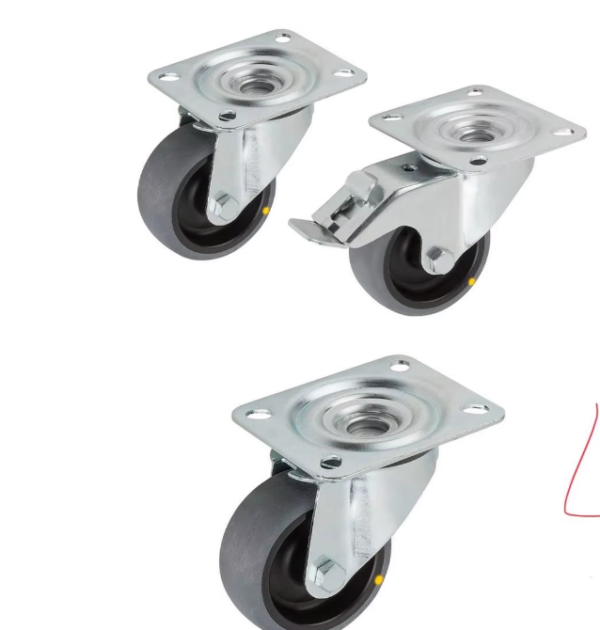
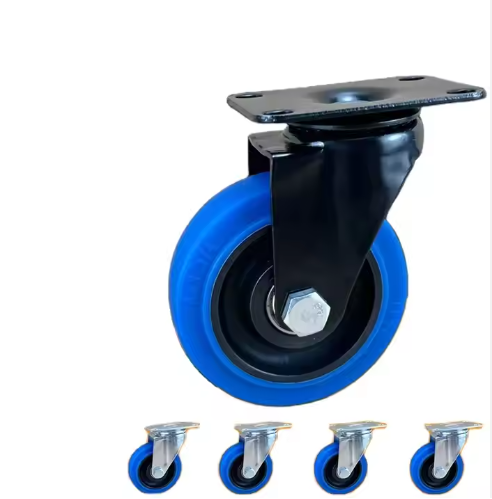
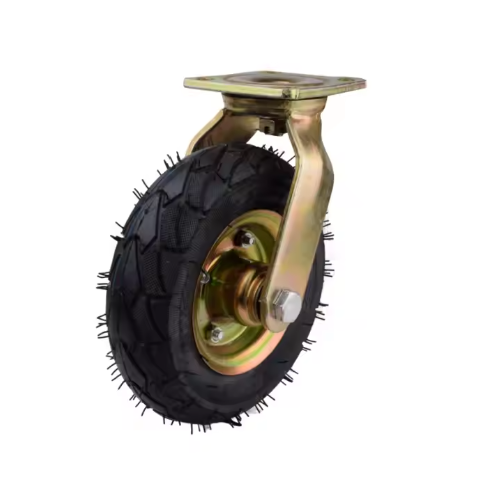
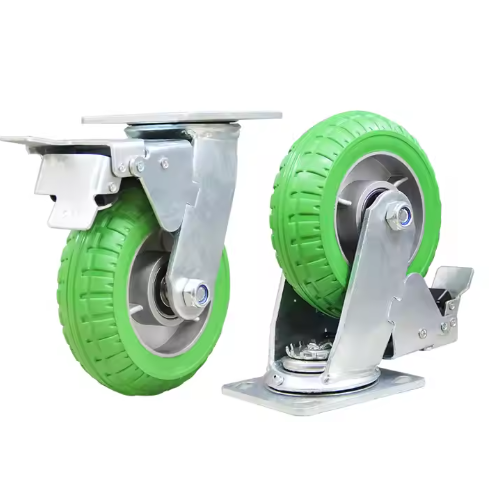
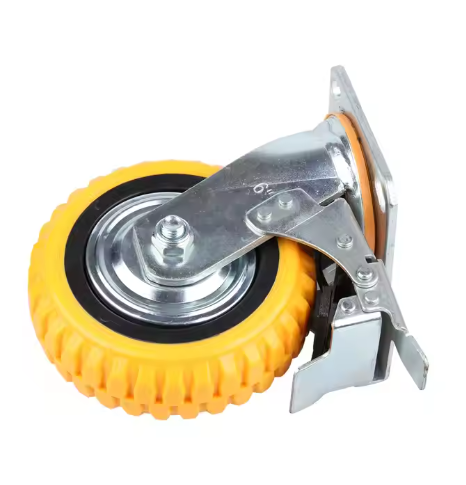
Reviews
There are no reviews yet.